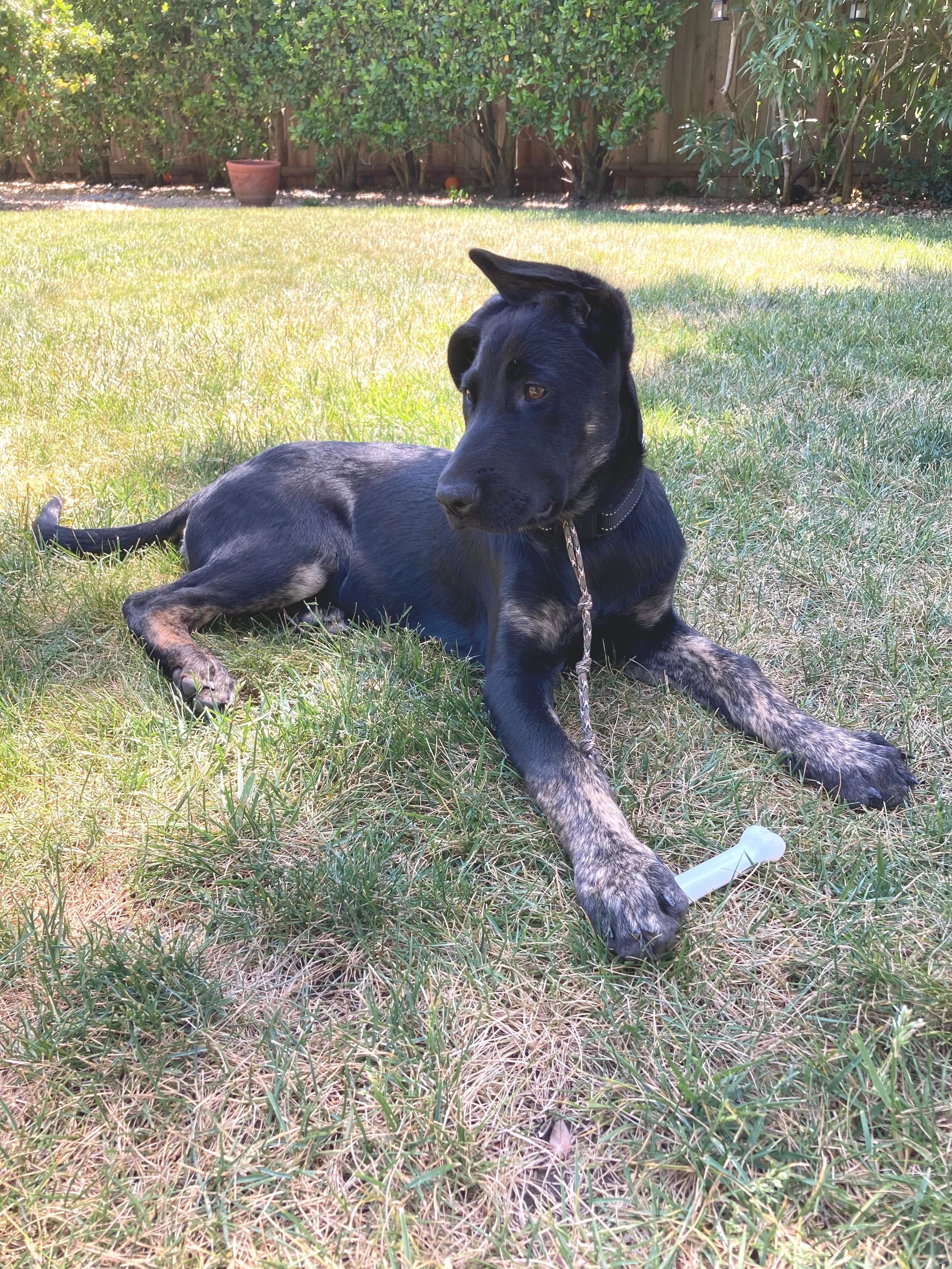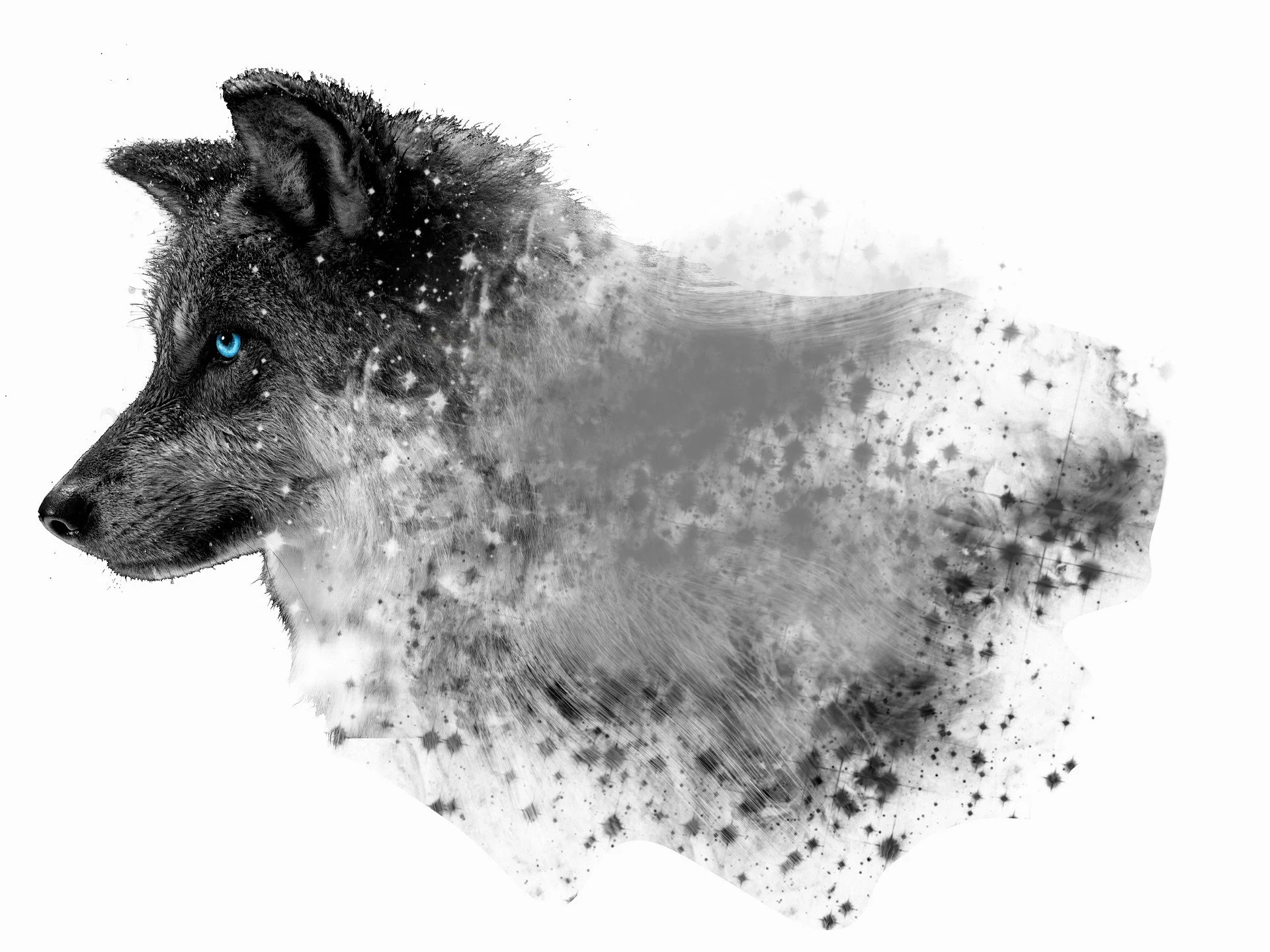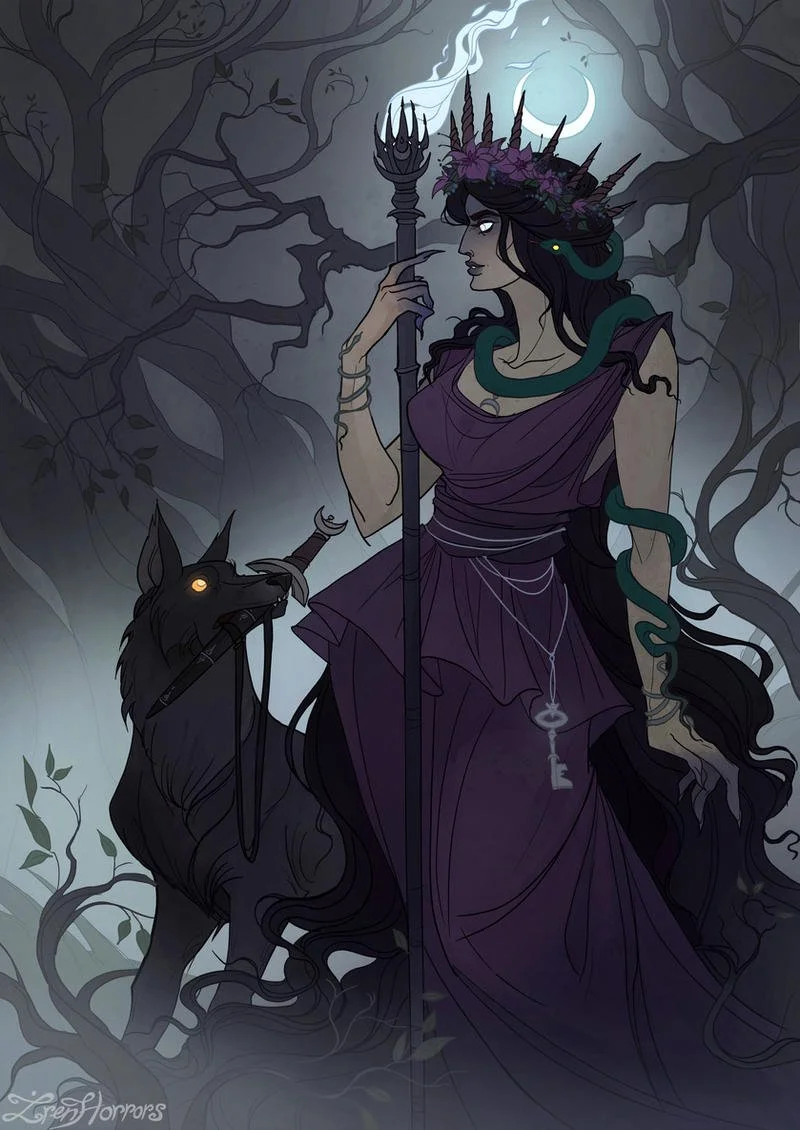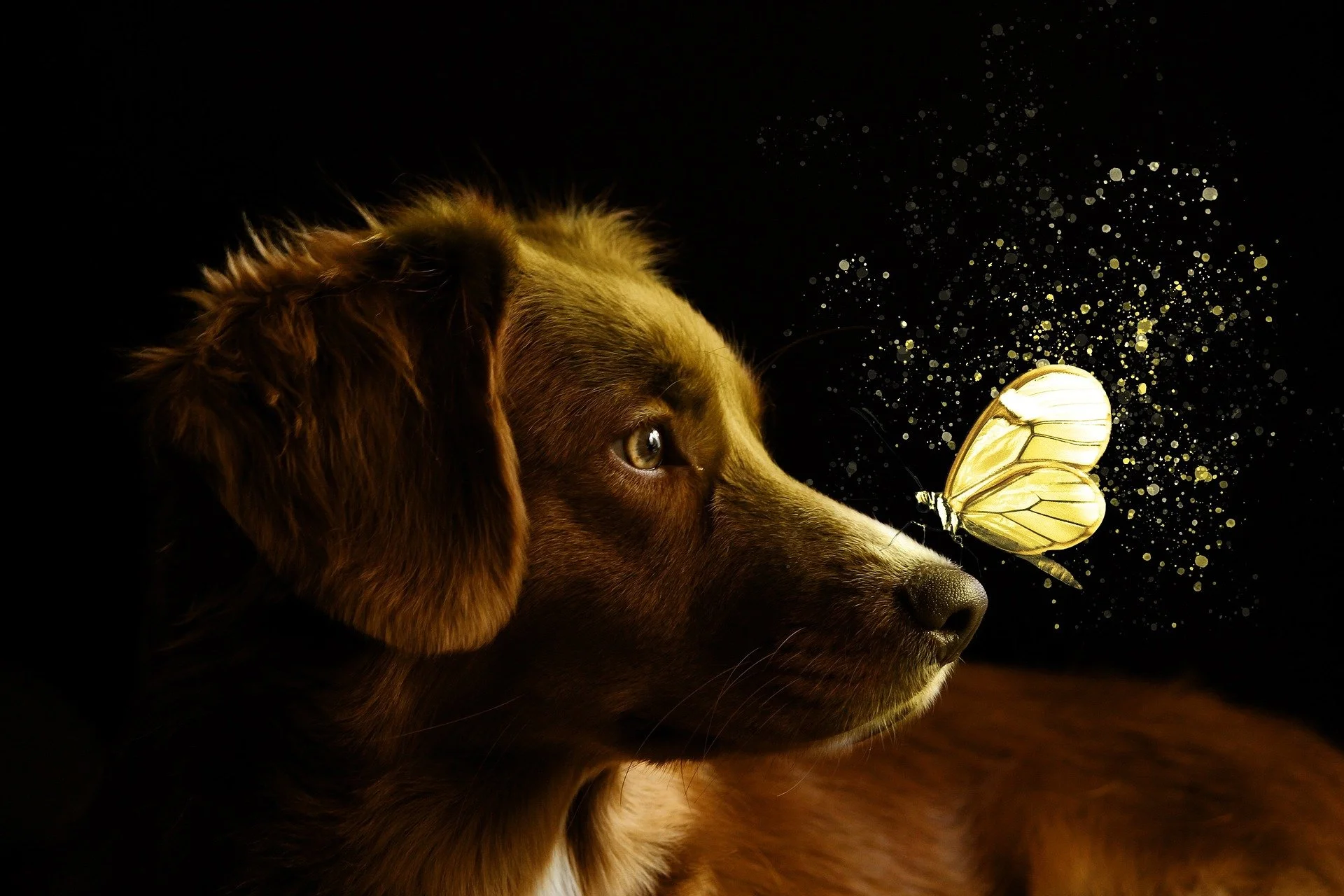The Canine Connection: Exploring the Deeper Meaning of Dog Symbolism
In humble tribute, this blog post is devoted to a cohort of cherished beings - Kastro, Ragnar, Habibi, Akeelah, and Feliz.
Dogs as Guides & Guardians
(Picture of puppy Ragnar on the left)
The relationship between humans and dogs is one of history's most enduring and profound connections. This bond has been forged over thousands of years, with both species evolving and adapting to each other's presence, forming a harmonious union of friendship, companionship, and mutual support.
The dog's exceptional abilities make it such an indispensable ally to humans. Revered as both guide and sentinel, they possess an unparalleled acuity of perception, enabling them to detect even the slightest changes in their environment, whether a sound or a scent. In addition, their steadfast orientation and unerring instincts make them valuable companions for hunting, tracking, and rescue operations.
But perhaps their most exceptional trait is their unwavering capacity for unconditional love and presence. This bond has proven transformative, providing comfort, joy, and a sense of purpose for humans and dogs alike, making it one of history's most significant and cherished relationships.
“Dogs are the magicians of the universe.”
― Clarissa Pinkola Estés
Dog Symbolism in Mythology
(Image from Pixabay)
From a more mystical vantage point, it is evident that across myriad cultures, dog mythology is ubiquitous. Often portrayed as the trusted companion of deities and a reliable guide for souls seeking the afterlife, the dog's significance transcends the earthly plane.
Moreover, the remarkable gift of its sense of smell has inspired tales of the dog serving as a mediator between the visible and unseen worlds, traversing the veil between the living and the dead. Indeed, inextricably linked with the concept of death - humanity's other unfaltering companion - the dog has been depicted as a mediator between the seen and unseen realms.
Dog Symbolism in Ancient Greek Myth & the Potterverse
In Greek mythology, the infamous three-headed hellhound, Cerberus, stood guard at the gates of the Underworld, fiercely and loyally serving Hades. Cerberus' imposing presence has transcended time and made its way into modern-day pop culture, including a cameo appearance in the wizarding world of Harry Potter as the colossal dog, Fluffy, who guarded the entrance to the Chamber of Secrets.
Another canine connection within the Potterverse is Sirius Black, Harry's godfather, who possessed the ability to shapeshift into a black hound to watch over his young charge. Sirius' namesake is derived from the Dog Star, the brightest luminary in the Canis Major constellation.
Across different eras and mediums, dogs have left their indelible paw prints on human consciousness, inspiring tales of unwavering loyalty, fierce protection, and transcendent love.
The Goddess Hekate and Her Black Hounds
(Art by IrenHorrors)
In traditional folklore, the image of witches and their feline familiars is commonplace. However, in ancient Greek mythology, the goddess of magic and witchcraft, Hekate (Hecate), was accompanied by black dogs as her loyal companions. These faithful canines were known to howl in her presence, particularly when she approached the crossroads, a place of potent magical significance.
Symbolically, the black dogs were regarded as the guardians of the gates to the Underworld. This motif recurs in various mythological traditions. Moreover, in certain representations, Hekate herself was depicted in canine form, sometimes even as a triple-headed one, underscoring the mythic significance of dogs in the realm of magic and mysticism.
Dog Symbolism in Ancient Egypt
The Symbolism of the Dog Star, Sirius
In ancient Egypt, dogs were held in high esteem, possibly due to their association with the celestial body known as the Dog Star, Sirius. The people of the Nile Delta were keenly aware that their livelihoods depended on the river's annual flooding, and they closely monitored the movements of the stars to predict its arrival. The appearance of Sirius on the horizon signaled that the floods were near. So the people revered this celestial event as a symbol of hope and abundance.
The Symbolism of the Jackal-Headed Anubis
According to legend, the ancient Egyptians deeply revered Anubis, the jackal-headed god of mummification and the afterlife. It was believed that Anubis would guide the souls of the departed to the realm of his father, Osiris, the god of the Underworld. As such, the Egyptians were wary of any scents that might displease the discerning nostrils of this revered deity, especially the smell of decay.
Moreover, the Egyptians recognized that their beloved dead deserved the utmost care and respect, even in death, and went to great lengths to preserve and protect their remains. Thus, the practice of mummification became a sacred ritual, and Anubis, the patron god of this art, stood as a powerful symbol of death and rebirth in ancient Egyptian mythology.
Dog Symbolism in Welsh & Celtic Myth
Throughout mythology, dogs have played a prominent role in the supernatural realm. In Welsh folklore, the Hounds of Annwn, also known as Cŵn Annwn, were tasked with safeguarding the mysterious realm of the Otherworld, a place associated with death and transformation.
Similarly, in Celtic mythology, the formidable hound of Culann loomed large in the legend of the demigod hero Sétanta. After killing Culann's fierce and beloved hound, Sétanta solemnly swore to serve as the man's loyal hound until a worthy replacement could be found. Sétanta thus earned the moniker "the Hound of Culann," or Cúchulainn (Cú Chulainn), forever enshrining his tale in Irish lore.
Image from Pixabay
Inviting the Dog Within
Dogs and the Inevitability of Mortality
As loyal companions, they are often with us throughout our lives. Moreover, their aging and eventual passing can remind us of our mortality. Also, in many cultures, dogs have been associated with the Afterlife or Underworld, serving as guides or protectors of the dead. The symbolic significance of the dog in relation to death and mortality may vary across cultures and belief systems. Still, the animal's close association with human life and its ultimate end has led to its enduring symbolic connection to these concepts.
Undoudebtly, the distinction between life and death is often stark and unambiguous in our society. The former is celebrated and cherished; the latter can be associated with decay and contamination. Yet, perhaps unconsciously, dogs may be a reminder of death's inescapable presence. Despite our best efforts to stave off aging and prolong vitality, the inevitability of death looms large, and our faithful canine companions bear witness to this immutable truth.
So I ask myself:
In what ways do I shield myself from this inescapable reality?
And might the dog, with its symbolic significance, serve as a catalyst for embracing the certainty of mortality?
The Dog-Human Connection: A Journey Through Time and Symbolism
The relationship between humans and dogs dates back thousands of years, making them one of the oldest and most beloved animal companions. They have been bred for countless purposes, from hunting and herding to protection and companionship, and have become an enduring presence in many aspects of human life. As such, it's no wonder they often appear in our dreams, thoughts, and memories, leaving an indelible mark on our psyche.
How has the canine presence in your life influenced your perception of the world?
Have you ever encountered a dog in a dream or noticed dogs appearing in significant moments?
By delving into our personal associations with dogs, we may gain valuable insights into our psyche and the messages these loyal companions may bring us.
Warmly,
Anny
Kindly note: The information included in this blog is not intended nor implied to be a substitute for mental health services. Please consult with a qualified professional to determine the appropriateness of the information for your own life experiences or if you have any questions.
.
References
Cavendish, R. (1983). Man, myth and magic: the illustrated encyclopedia of mythology, religion and the unknown. Marshall Cavendish.
Martin, K., & Ronnberg, A. (2010). The book of symbols: Reflections on archetypal images. Taschen.
Nozedar, A. (2010). The illustrated signs & symbols sourcebook: an A to Z compendium of over 1000 designs. Harper.




